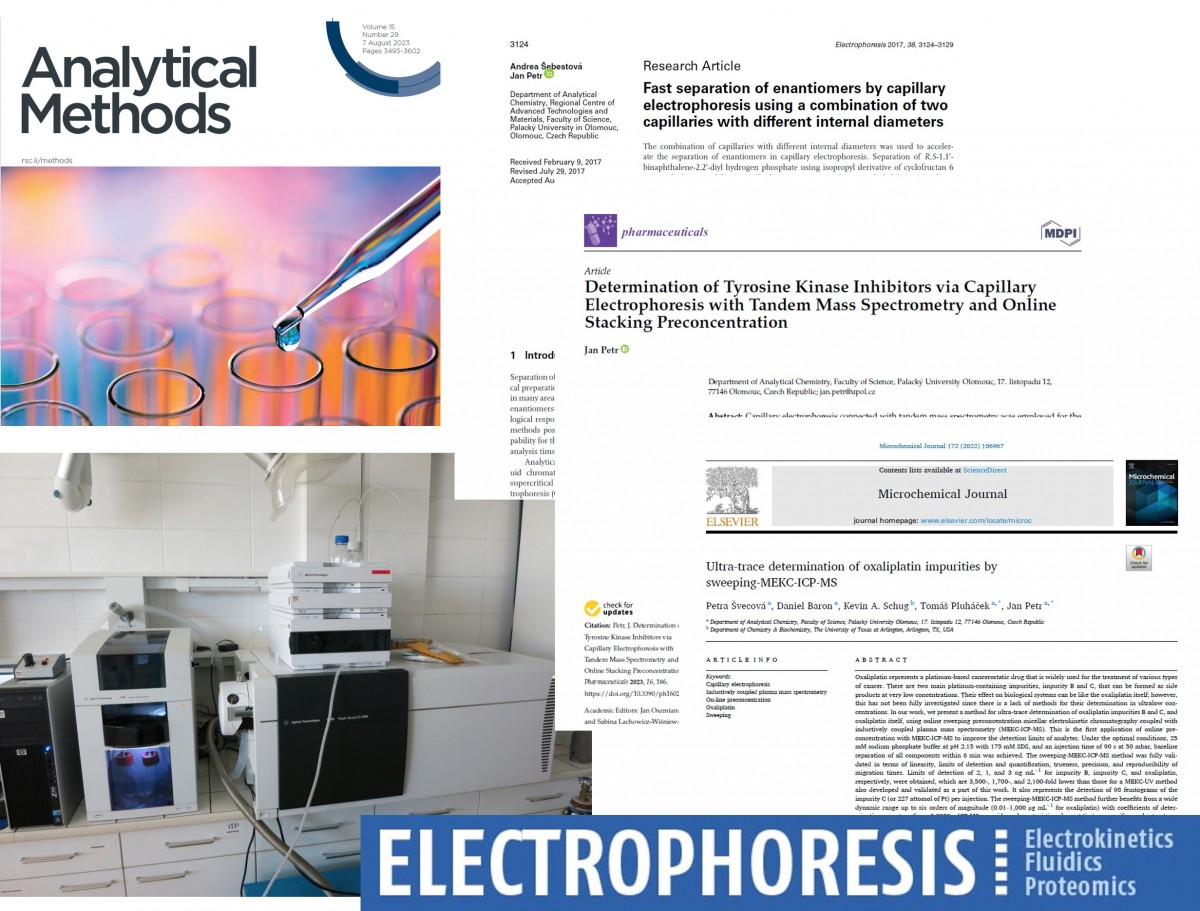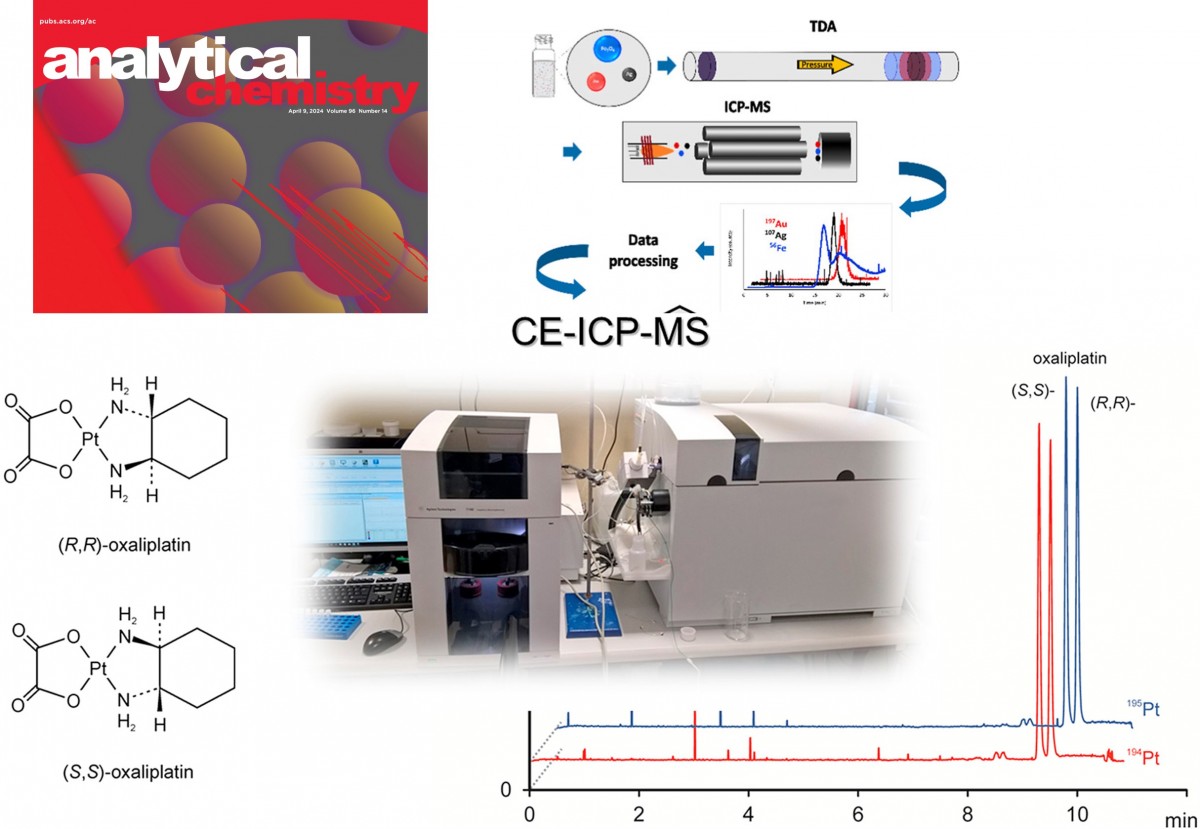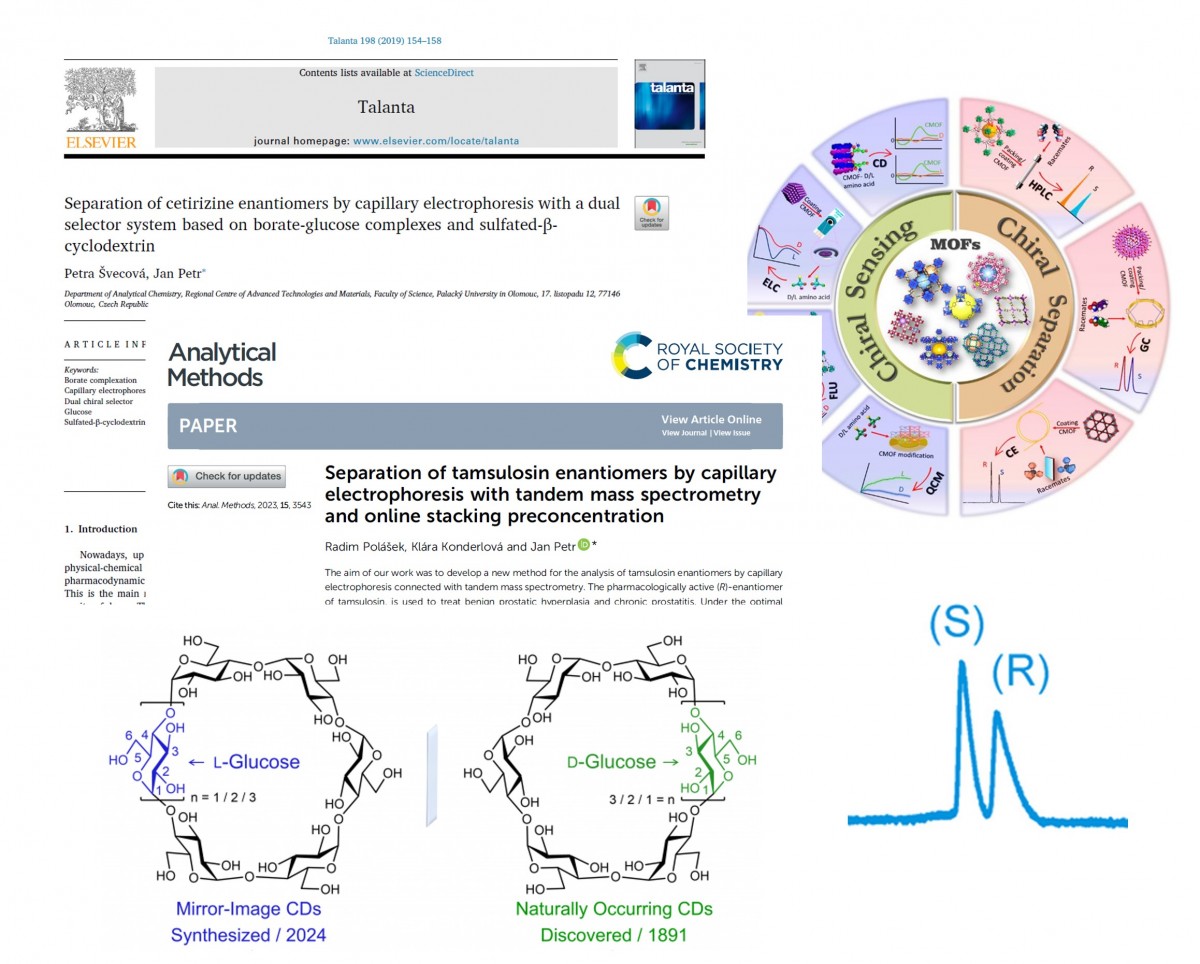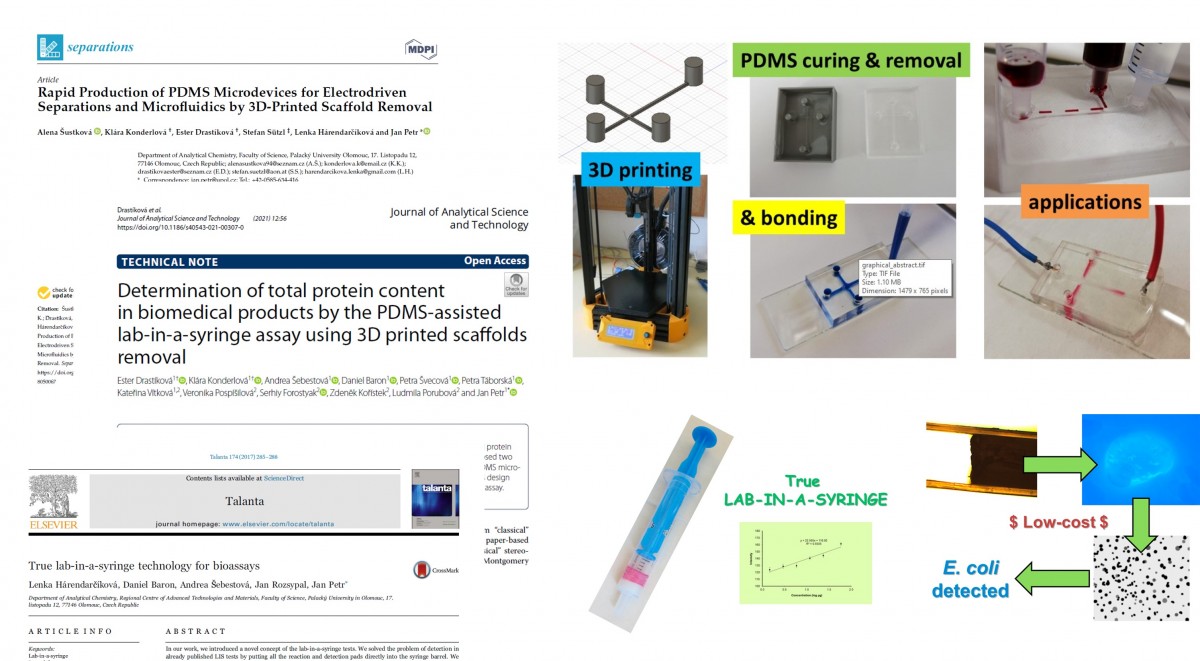Research
Our research addresses the following themes and areas:
Capillary electrophoresis
Capillary electrophoresis (CE) is a widely recognized separation technique conducted in ultrathin capillaries (50 µm). In CE, analytes migrate through electrolyte solutions under the influence of an electric field and are separated based on differences in their velocity (mobility). In our group, we are developing new methods for analyzing various biologically active compounds. We utilize several detection methods, including diode array detection, contactless conductivity detection (via the TraceDec instrument), and electrospray ionization mass spectrometry (CE-ESI-MS) with a triple quadrupole analyzer.
CE-ICP-MS
Our group has developed a robust home-made connection between capillary electrophoresis and inductively coupled plasma mass spectrometry (CE-ICP-MS) for experimental use. We collaborate closely with the group of Tomáš Pluháček on this work. Our focus is on developing novel methods for analyzing metal-containing biologically active compounds, such as chiral drugs. Additionally, we have already developed a unique tool for characterizing metal-based nanoparticles using Taylor dispersion analysis and CE-ICP-MS (published in Analytical Chemistry in 2024), and we are continuing this research.
Chiral separations
Chirality is a well-known phenomenon in nature, with L-amino acids serving as the building blocks of proteins in living organisms. Today, more than 50% of drugs are chiral, creating a need for powerful methods to separate enantiomers—essential for controlling drug quality and understanding the fate of enantiomers in living systems. In capillary electrophoresis (CE), chiral selectors are added to electrolytes, forming diastereomeric complexes that facilitate enantiomer separation. In our research, we focus on developing novel methods for chiral separations by exploring new selectors, their combinations, and interactions with other compounds such as boric acid, while also deepening our understanding of separation mechanisms.
Characterization of nanoparticles
In recent decades, nanoparticles (NPs) have attracted significant interest from both researchers and industry due to their unique properties, enabling their use in various applications, including medicine, sensing, biotechnology, water treatment, electronics, and energy storage. However, a deep understanding of NP behavior, particularly in aqueous systems (e.g., living organisms or the environment), remains limited, mainly due to technical challenges in their analysis. Our group has been working on the CE characterization of NPs for many years. We have described preconcentration effects of NPs in CE, studied certain interactions, and applied our CE-ICP-MS instrumentation to investigate their behavior in the presence of other NPs (published in Analytical Chemistry in 2024). We are now continuing these studies with different types of NPs to further expand knowledge about their behavior and fate in the environment.
Low-cost microfluidics
Microfluidics, in general, focuses on the behavior, precise control, and manipulation of fluids constrained to ultra-small scales. In this multidisciplinary field, we are particularly interested in low-cost microfluidic techniques that utilize inexpensive procedures and materials. We are developing new devices using paper, foils, PDMS, and syringes. FDM 3D printing and hobby laser cutting machines have also been applied.




The laboratory and project data management: Data management